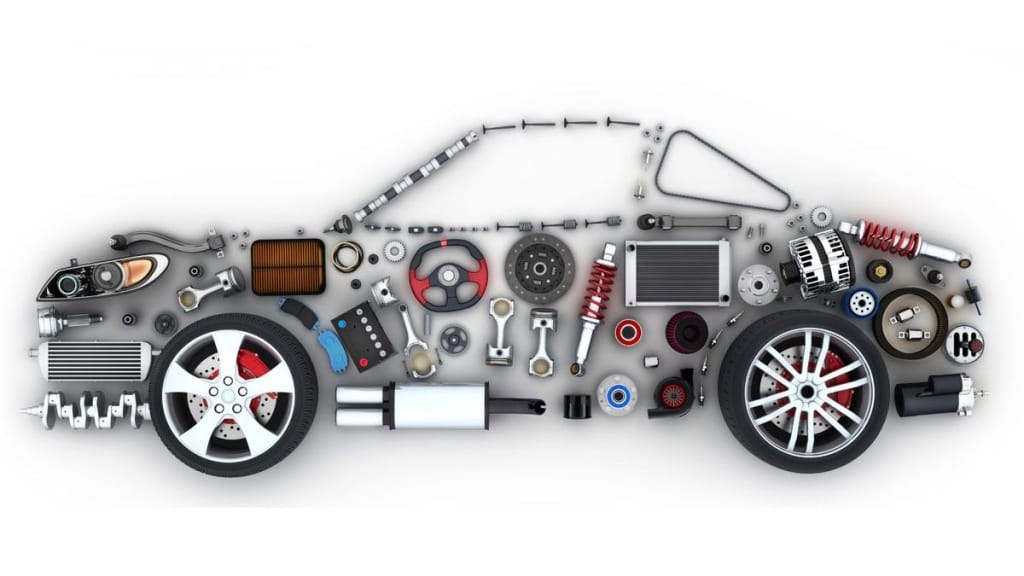Your Ultimate Guide to Navigating Rock Auto for Car Parts
Finding the right parts for your car can feel like searching for a needle in a haystack. Whether you’re a seasoned DIY mechanic or just trying to save some money on a simple repair, you need a reliable source for quality components. This is where rock auto comes into the picture. As a massive online auto parts superstore, it offers a huge selection for nearly every make and model imaginable. But with so many options, how do you make sure you’re getting the right part at the best price? This comprehensive guide will walk you through everything you need to know about shopping on rock auto, from finding your parts to understanding their policies and making the most of your purchase. We’ll cover tips, tricks, and essential information to help you shop with confidence and get your vehicle back on the road.
Key Takeaways
- Vast Selection: Rock auto is known for its extensive catalog, offering parts for a wide range of vehicles, from classic cars to brand-new models.
- Price Comparison is Key: The platform allows you to compare prices from various manufacturers for the same part, helping you find the best deal for your budget.
- Understand Part Types: Know the difference between OEM, aftermarket, and remanufactured parts to make an informed decision based on your needs for quality, price, and warranty.
- Shipping Costs Matter: Always factor in shipping costs, as they can vary significantly based on the warehouse location. Consolidating your order from a single warehouse can save you money.
- Return Policy Awareness: Be familiar with the rock auto return policy, including the 30-day window and the process for returning incorrect or defective parts.
What is Rock Auto and Why is it So Popular?
Rock auto is a family-owned, online-only auto parts retailer that has been serving customers since 1999. Their business model is built on providing a massive selection of automotive parts directly to consumers at competitive prices. Unlike traditional brick-and-mortar stores, they don’t have the overhead of physical retail locations, which allows them to pass savings on to their customers. Their popularity stems from several key factors. First, their catalog is one of the most comprehensive in the industry. You can find everything from common maintenance items like oil filters and brake pads to more obscure components for vintage or less common vehicles. This one-stop-shop approach is incredibly convenient for car enthusiasts and everyday drivers alike. Second, the website is designed to make it easy to find exactly what you need. By simply entering your vehicle’s year, make, and model, you are presented with a categorized list of parts guaranteed to fit. This eliminates the guesswork often associated with buying car parts.
How to Effectively Shop on the Rock Auto Website
The rock auto website is powerful, but its text-based, no-frills interface can be a bit intimidating for new users. However, once you understand its logic, it becomes an incredibly efficient tool. The process begins by selecting your vehicle’s information from the dropdown menus on the homepage. After you’ve chosen the year, make, model, and engine size, the site presents you with a list of part categories, such as “Brake & Wheel Hub,” “Engine,” and “Suspension.” Clicking on a category reveals all the available parts. What makes rock auto truly useful is the way it displays options. For a single part, like a water pump, you might see a dozen different choices from various manufacturers, all at different price points. Look for the small heart icons next to parts, which indicate they are popular or “customer favorite” choices. Also, pay close attention to the truck icons next to the part prices; these indicate which warehouse the part will ship from. Choosing parts from the same warehouse can significantly reduce your overall shipping costs.
Decoding the Rock Auto Catalog: Finding the Right Part
With potentially dozens of options for a single component, choosing the right one on rock auto can seem daunting. The key is to understand what you’re looking at. The catalog is neatly organized by vehicle system. For instance, if you need to replace your alternator, you would navigate to the “Electrical” category and then find “Alternator / Generator.” Within that section, you’ll see parts from brands you might recognize, like ACDelco or Bosch, alongside more budget-friendly options. Rock auto often includes helpful information next to each part. You might see notes like “Daily Driver,” “Heavy Duty,” or “Economy.” These are clues to the part’s intended use and quality level. Daily Driver parts are standard replacements, while Heavy Duty options are built for more demanding conditions. Economy parts are the most budget-friendly but may not offer the same longevity. Always read the part descriptions carefully for details about materials, included hardware, and specific fitment notes.
OEM vs. Aftermarket vs. Remanufactured Parts
One of the most important decisions you’ll make when shopping is choosing the type of part. Rock auto offers a mix of Original Equipment Manufacturer (OEM), aftermarket, and remanufactured components. Understanding the differences is crucial for balancing cost, quality, and performance.
|
Part Type |
Pros |
Cons |
|---|---|---|
|
OEM (Original Equipment Manufacturer) |
– Identical to the part your car came with |
– Most expensive option |
|
Aftermarket |
– Wide range of prices and quality levels |
– Quality can vary greatly between brands |
|
Remanufactured / Rebuilt |
– More affordable than new parts |
– Quality depends on the remanufacturing process |
Understanding Shipping Costs and Warehouse Logistics
One of the most common points of confusion for new rock auto shoppers is shipping. Since rock auto ships parts from numerous warehouses across the country, your total shipping cost depends on where your chosen parts are located. If you order three parts that each ship from a different warehouse, you will have to pay for three separate shipments. This can quickly add up and negate the savings you found on the parts themselves. To manage this, always look for the small truck icon next to each part in your shopping cart. This tells you which warehouse group the part belongs to. To save money, try to select all your parts from the same warehouse group whenever possible. The shopping cart makes this easy by grouping items by their shipping location. Sometimes, paying a dollar or two more for a part that ships from the same location as your other items will result in a lower overall cost than choosing the cheapest part from a different warehouse.
The Rock Auto Return Policy: What You Need to Know
Even with careful research, you might occasionally order the wrong part or receive a defective one. Understanding the rock auto return policy is essential. Generally, you have 30 days from the date of your order to return a part for any reason. The part must be in its original, uninstalled condition and in the original packaging. To initiate a return, you’ll need to go to the “Order Status & Returns” page on their website and enter your order number and email address. From there, you can select the part you wish to return and the reason for the return. Rock auto will then provide you with a shipping label and instructions. It’s important to note that you are typically responsible for the cost of return shipping unless the error was on their end (e.g., they sent the wrong part). For warranty claims on defective parts, the process is similar, but the terms will depend on the manufacturer’s warranty for that specific component.
Comparing Rock Auto Prices to Local Auto Parts Stores
A major advantage of rock auto is its pricing. Because they operate without the high costs of physical stores, they can often offer parts for significantly less than your local auto parts chain. It’s not uncommon to find the exact same brand-name part for 30-50% less online. However, it’s crucial to factor in shipping costs when making a direct comparison. For a single, small item you need immediately, the shipping cost might make the local store a better deal. But for larger orders or more expensive components, the savings on rock auto can be substantial, even with shipping. For example, a complete brake job (rotors and pads for all four wheels) could be hundreds of dollars cheaper. It’s always a good idea to add the items to your cart on the rock auto site to get a final price with shipping, then compare that to the prices at your local stores before making a final decision.
DIY vs. Professional Installation: Making the Right Choice
Once you’ve purchased your parts from rock auto, the next step is installation. This is where you face the classic dilemma: do it yourself (DIY) or hire a professional mechanic? The DIY route can save you a significant amount of money on labor costs, which often exceeds the cost of the parts themselves. For simple jobs like changing an air filter, replacing windshield wipers, or even an oil change, DIY is a great option for beginners. More complex jobs like replacing brake pads or a starter require more tools and knowledge but are still achievable for many home mechanics. However, for critical safety systems (like steering or suspension) or highly complex jobs (like an engine or transmission rebuild), it’s often wiser to trust a professional. A mistake during these installations can lead to costly damage or, worse, a dangerous failure on the road. For more great DIY tips and project ideas, you can check out resources like the ones found over at https://versaillesblog.com/ for inspiration.
Essential Tools for the DIY Mechanic
If you decide to tackle repairs yourself, having the right tools is non-negotiable. Building a good toolkit takes time, but you can start with the basics.
H4: Basic Hand Tools
- A good socket and ratchet set (in both metric and standard sizes)
- A set of combination wrenches
- Screwdrivers (Phillips and flathead)
- Pliers (needle-nose, standard, and channel-lock)
- A torque wrench for tightening bolts to manufacturer specifications
H4: Safety and Specialty Equipment
- Jack and Jack Stands: Never work under a car supported only by a jack. Always use jack stands.
- Gloves and Safety Glasses: Protect your hands and eyes from dirt, fluids, and debris.
- OBD-II Scanner: For cars made after 1996, this tool reads diagnostic trouble codes from your car’s computer.
Warranty Considerations When Buying from Rock Auto
Warranties provide peace of mind, and the parts you buy from rock auto are no exception. However, the warranty is provided by the part’s manufacturer, not by rock auto itself. This means that warranty length and terms can vary greatly from one brand to another. A premium brand might offer a lifetime warranty on a specific part, while an economy option might only have a 90-day warranty. You can typically find warranty information on the part’s detail page before you buy. If you need to make a warranty claim, you’ll initiate the process through the rock auto website. They will facilitate the claim with the manufacturer, which may involve you shipping the defective part back for inspection. Be aware that most warranties cover only the part itself and do not cover labor costs for installation or any collateral damage caused by the part’s failure.
Environmental Tips for Car Maintenance
Responsible car maintenance goes beyond just keeping your vehicle running; it also involves minimizing your environmental impact. When you’re working on your car with parts from rock auto, there are several ways to be more eco-friendly. First, always dispose of old fluids properly. Used motor oil, antifreeze, and transmission fluid are hazardous materials and should never be poured down the drain or onto the ground. Most local auto parts stores or municipal recycling centers accept these fluids for free. Second, consider using remanufactured parts. As mentioned earlier, remanufactured components reuse the core of the original part, reducing waste and conserving the energy needed to produce a new part from raw materials. Finally, recycle your old metal parts, like old brake rotors or exhaust components. These can be taken to a local scrap metal dealer, which not only keeps them out of landfills but can also put a few dollars back in your pocket.
Conclusion
Shopping for auto parts online through rock auto can be an incredibly rewarding and cost-effective experience. With its unparalleled selection, competitive pricing, and a robust catalog that caters to nearly every vehicle, it has become a go-to resource for DIY mechanics and savvy car owners across the country. By understanding how to navigate the website, compare part types, manage shipping costs, and prepare for potential returns, you can unlock the full potential of this powerful platform. Whether you are performing routine maintenance or undertaking a major repair project, rock auto provides the components you need to get the job done right. Armed with the knowledge from this guide, you are now ready to tackle your next automotive project with confidence and save money in the process.
Frequently Asked Questions (FAQ)
Q1: How do I know the part from rock auto will fit my car?
A: Rock auto‘s catalog is specifically designed around vehicle fitment. As long as you accurately enter your car’s year, make, model, and engine size, the parts listed are guaranteed to be compatible. Always double-check any notes in the part description for specific sub-model exceptions.
Q2: Why are the parts on rock auto so much cheaper?
A: Rock auto operates as an online-only warehouse distributor. They don’t have the expenses of traditional retail stores, such as rent, salespeople, and elaborate displays. This lower overhead allows them to sell parts at prices closer to wholesale.
Q3: Can I get my parts the same day from rock auto?
A: No, rock auto does not offer same-day delivery as they do not have physical stores for pickup. All orders are shipped from their warehouses, which typically takes a few business days depending on your location and the shipping method you choose.
Q4: What is a “core charge”?
A: A core charge is a type of deposit you pay when you buy a remanufactured part (like an alternator or starter). You get this deposit back when you send your old, broken part back to rock auto. This encourages recycling and provides the manufacturers with “cores” to remanufacture.
Q5: Is it safe to use my credit card on the rock auto website?
A: Yes, it is safe. The rock auto website uses standard encryption (SSL) to protect your personal and financial information during checkout, which is the same security technology used by major online retailers and banks.














Post Comment